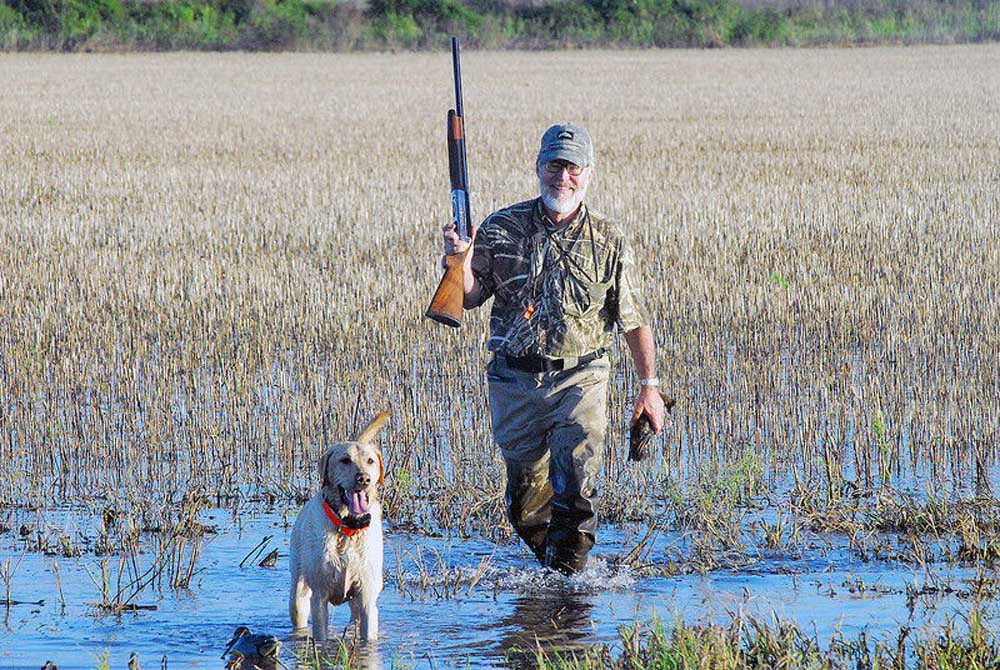Teal numbers mean a good start to year
Published 8:29 am Monday, September 5, 2016

- STEVE KNIGHT/STAFF AS MANY AS 30,000 HUNTERS will get an early start to duck season during the statewide teal-only season and the early Canada goose season in the Eastern Goose Zone. The season runs Sept. 10 to 25.
The Texas waterfowl version of dove hunting, the early teal-only season, is the second hunting season of the fall to open with a 16-day season running Sept. 10 to 25.
Trending
A hit-and-miss kind of hunting depending on water on the ground and temperatures to the north, the early season targeting teal is a popular start to the year for waterfowlers.
“I would say next to Louisiana there is no other state that takes the teal season more seriously and enjoys it more. Our data indicates that 30,000 people teal hunt during our special early September teal season across the state each year. That is about 30 percent of our estimated statewide waterfowl hunters each season,” said Kevin Kraai, Texas Parks and Wildlife Department’s waterfowl program leader.
According to U.S. Fish and Wildlife Service data early season hunters take about 160,000 teal and another 200,000 during the regular season statewide. Although hunters may take any species of teal, the majority of the early season harvest is bluewings because they are the earliest migrants.
Although the season is open in all 254 Texas counties there are some areas better than others.
“By far and away the coastal regions of Texas are the most popular areas to hunt teal. The coastal marshes and what is left of our rice industry is very attractive to migrating blue-winged teal each year,” Kraai said.
If there is anything close to a sure shot the coast would be it because it serves as a natural layover during the birds’ migration from the Prairie Pothole region where they nest each summer to their winter stops in Central and South America.
Trending
Kraai said that does not mean hunters have to converge on the coast to get a six-bird daily bag limit.
“The reservoirs of central and eastern Texas are a close second in regards to opportunity and success,” he noted.
Capable of making the flight from the Canadian border to Texas in a day, Kraai said the birds generally land in Texas hungry and tired. That provides keys to hunters about what portions of a lake they should be scouting.
“Migrating teal in the fall and late summer are dealing with lots of demands associated with feather replacement and maintaining body weights,” Kraai said.
“The upper ends and shallows of these reservoirs often provide excellent locations to find necessary fatty seeds and aquatic invertebrates needed to maintain their lives.”
Other teal hunting hotspots in Texas can be playa lakes in the High Plains, if they contain water and stock ponds in Central and West Texas.
However, Kraai said success on the ponds is dicey because they serve as little more than way stations for the birds.
Even where there are birds on big waters, hunters often find they are in a spot one day and gone the next. The lack of a food source, weather changes and scouting and hunting pressure can keep the birds moving south.
Overall bluewing teal breeding numbers have dipped in recent years after hitting a record high at 9.2 million birds in 2012, 94 percent above the long-term average count.
This year biologists estimated counting 6.6 million teal in this spring’s survey, a decline of 22 percent from a year ago, but still 34 percent above the long-term average.
“Teal numbers have indeed dropped slightly in recent years, but it is important to remember that bluewings are just a few years removed from the greatest numbers we have ever recorded. It is hard to go anywhere but down when they are at record numbers,” Kraai noted.
He added that this spring’s breeding numbers may be misleading when it comes to the kind of nesting success the birds had.
“Conditions since the May survey have greatly improved across their breeding grounds which will have resulted in excellent nesting conditions for this late nesting species let alone fantastic brood rearing conditions later in summer resulting in very high brood survival thus leading to a much above average fall flight,” Kraai said.
He said the count may also not have been accurate to begin with because of a late migration north last spring that left a large number of bluewings in Texas and other states when the count was conducted.
A successful hunt means finding where the birds want to go.
Kraai said teal are constantly moving during the migration and recommends hunters start with productive shallow water.
“These waters harbor the small aquatic bugs they seek to help replace feathers during molt,” he said.
“They also are home to thousands of seeds from wetland plants that they need to maintain body weights for continued migration.
“Many times very hot shallow water is where you will find these birds foraging. Any location that you can couple expanses of shallow water and grassy vegetation, it is almost a sure bet teal will visit during migration.”
For those without access to that type of water or find someone already in their spot the suggestion for a backup plan is to find as good a spot as possible and hope for an influx of birds looking for a rest stop.
Teal are not the only target for waterfowlers this month.
Canada geese will also be in the sights of some hunters in the state’s Eastern Goose Zone.
The three-bird limit may be even more elusive than a teal limit except for hunters have access to property where the birds go to feed or loaf during the day.
“The early goose season is something we are proud to provide to hunters that have the opportunity.
“It is fairly limited to areas along the Red River and some of the reservoirs of north Texas. It is starting to catch on and we are actually seeing folks target this growing opportunity more and more each year,” Kraai said, adding the annual harvest may only be a few hundred birds.
TWITTER: @txalloutdoors






